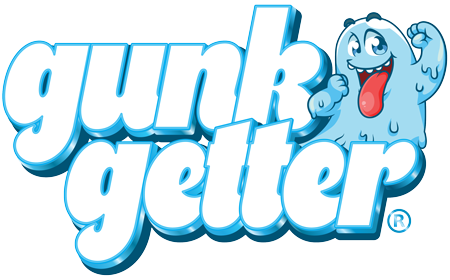Frequently Asked Questions
1. Why is organizing cleaning supplies essential?
2. How can I assess my current cleaning supplies?
3. What types of storage solutions are recommended for cleaning supplies?
4. What eco-friendly practices can I incorporate when organizing cleaning supplies?
5. How can I maintain the organization of my cleaning supplies?
Cleaning can be a daunting task, but with the right organization strategies, you can make the process easier and more efficient. An organized collection of cleaning supplies not only saves time but also enhances your overall cleaning experience. Below, we’ll delve into expert tips to help you get your cleaning supplies in order, making them easily accessible and effective in keeping your home sparkling clean.
Why Organizing Your Cleaning Supplies is Essential
Have you ever found yourself searching high and low for a cleaning product only to realize it’s hiding behind a stack of clutter? An unorganized cleaning supply area can lead to wasted time, increased frustration, and even unnecessary spending on duplicate products. Here are some reasons why organization is key:
- Efficiency: Save time by knowing where each cleaning item is located.
- Prevent wastage: See what you have to avoid buying items that you already own.
- Better planning: Plan cleaning sessions effectively by assembling your supplies ahead of time.
Assessing Your Current Cleaning Supplies
Before diving into organization methods, take stock of what you currently have. This assessment is crucial for creating an effective organizational system.
Inventory Your Supplies
Start by gathering all your cleaning supplies in one area. This includes everything from sprays and wipes to cloths and brushes. Go through each item and consider the following:
- Do you use this product regularly?
- Is this product still effective or safe to use?
- Is there any product that can be consolidated?
By answering these questions, you'll be able to streamline your collection and eliminate anything that is expired or unnecessary.
Selecting a Storage Solution
Once you have a clearer understanding of what you own, the next step is selecting the right storage solution. The goal is to create an organized area that fits your home’s space and your personal style.
Choose the Right Container
Opt for clear containers or labeled bins to allow easy visibility of contents. Some storage solutions you might consider include:
- Cabinets: Ideal for storing larger items and keeping products out of sight.
- Shelves: Great for displaying items while maintaining accessibility.
- Carts: Mobile cleaning caddies allow you to easily transport supplies from room to room.
Labeling is Key
Label containers clearly so that anyone can locate and return items to their rightful place. Use a label maker, or simply write on masking tape for an easy DIY solution. Consider these categories for labeling:
- Surface Cleaners
- Bathroom Supplies
- Floor Cleaners
- Dusting Products
Strategic Placement of Cleaning Supplies
Next, think about how you can arrange your supplies for maximum effectiveness. The key is to group items based on their use and proximity to the areas you clean most often.
Keep It Accessible
Place frequently-used items in easy-to-reach locations. Consider setting up stations near the areas where you use these supplies the most:
- Kitchen: Store dish soaps and surface cleaners in a mixed-use caddy
- Bathroom: Place bathroom cleaners and sanitizers in a designated basket under the sink
- Living Room: A small toolkit with dusters and sprays can be easily kept in a cabinet nearby
Rotate Seasonal Supplies
Some cleaning tasks are seasonal (like window washing or deep cleaning carpets). Store these products separately and switch them out as needed. If you have space, consider using higher shelves for items you use less frequently.
Incorporating Eco-Friendly Practices
As more people emphasize sustainability, incorporating eco-friendly cleaning practices into your routine can enhance your organization process. Here are some ways to embrace this change:
Refillable Containers
Invest in refillable containers for your cleaning supplies. You’ll not only cut down on waste but also streamline your storage since these often come in uniform sizes. Transfer your products into reusable bottles for a uniform look.
Natural Cleaning Ingredients
Consider using natural ingredients like vinegar and baking soda as substitutes for commercial cleaners. Not only are they cost-effective, but they can also be stored together in designated containers.
Maintenance: Keep Your Supplies Organized
Organizing your cleaning supplies isn’t a one-time task. Regular maintenance is essential to prolong the effectiveness of your system.
Establish a Cleaning Supply Routine
Schedule a regular reassessment of your cleaning supplies every few months. This way, you can keep track of any items that need replenishing or products that may have been overlooked. You can do a quick check during your regular cleaning chores.
Involve the Family
Encourage family members to return cleaning items to their designated spots after use. This collective responsibility ensures that the system stays organized and maintains its efficiency.
Creating a Cleaning Schedule: The Cherry on Top
Consider pairing your organized supplies with a cleaning schedule to maximize your efforts. An effective cleaning schedule allows you to tackle household tasks methodically without feeling overwhelmed. Here are a few tips:
Daily, Weekly, and Monthly Tasks
Break down your cleaning chores into daily, weekly, and monthly lists. This division ensures that no task becomes too daunting and allows you to maintain a consistent cleaning routine. Here’s an example:
- Daily: Wipe down surfaces, rinse dishes, and sweep high-traffic areas.
- Weekly: Vacuum carpets, mop floors, and clean the bathroom.
- Monthly: Dust hard-to-reach areas, clean out your refrigerator, and organize outdoor spaces.
Flexibility is Important
As life can often be unpredictable, remain flexible in your cleaning schedule. Adapt it as necessary based on events, guests, or changes in your family routine. The goal is to create a stress-free cleaning environment that works for you!
Your Road to a Sparkling Home Starts Here!
Following these tips can help you streamline your cleaning process and transform your home into a well-organized haven. Embrace the calmness that comes from an orderly cleaning supply area, and enjoy a more efficient cleaning experience. With your supplies organized and accessible, maintaining cleanliness will become a breeze—unlocking more time to enjoy life's little moments!


Share:
Mastering the Mess: Your Guide to Tackling Common Household Cleaning Challenges
The Importance of Deep Cleaning: When and How Often to Keep Your Space Sparkling